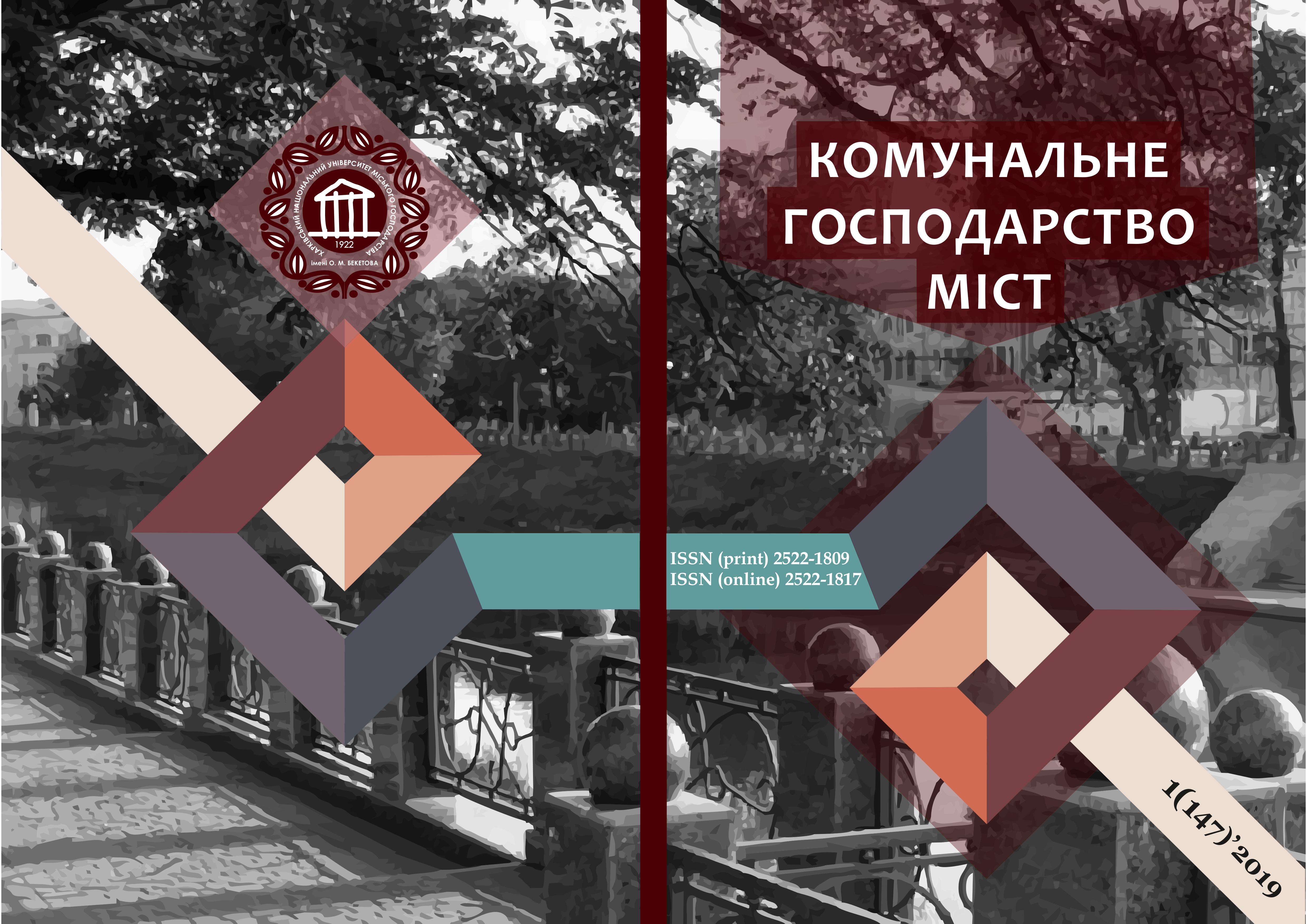THE REGULARITIES OF WEAR OF A CONTACT WIRE DURING OPERATION ON THE CITY ELECTRIC TRANSPORT
Array
Keywords:
contact wire, electrical and mechanical wear, stress-strain state, current removal quality criteriaAbstract
The problem of reliability and efficiency of current collection of urban electric transport has become increasingly apparent with the increase in the cost and limitations of all types of resources. This requires improving the design of current collectors, contact network, selection of materials for the contact wire, as well as research. The materials of the inherent heterogeneity of the structure of the surface layer and the concentration of clusters of defects and the localization of internal stress as a consequence of the mechanical and electrical wear. As a result, the surface of the contact wire is worn. In the framework of the challenge of ensuring quality of current collection was made complex research of intensity of wear of the contact wire for electrical transport. The main wear criterion was the minimum allowable cross-section of the contact wire.
This article describes the features of the influence of physical processes occurring in the friction pair "contact wire-current collector" taking into account the influence of factors such as mechanical load, mileage, speed, current flow time for urban electric transport. Equations are presented that describe the process of displacement along the axes that is, the wear of the contact wire using the method of decomposition of the function into an infinite sum of power functions (Taylor series), the theory of friction and wear, the theory of physical and chemical processes. On the basis of the corresponding equations obtained dependences that relate electrical, mechanical, physico-chemical and tribological characteristics of the contact wire relative to the operating conditions of urban electric transport. A mathematical model of the wear dynamics of the contact wire is obtained, which determines its wear, that is, a section is formed during operation, taking into account the influence of factors such as mechanical load, mileage, speed, time of flow of current in the friction pair "contact wire – current collector". It is shown that the use of the proposed model will create a test device for physical modeling of the main parameters of the current collector of the electric power supply system of electric transport.
References
Sidorov, O. A., Stupakov, S. A. (2009) Metody issledovanija iznosa kontaktnyh par ustrojstv tokos"ema monorel'sovogo `elektricheskogo transporta: Monografija. Omsk, 155.
Deutzer, М. (2009) Elektrische Bahnen, 3, 128–134.
Biesenack, H., Pintscher, F. (2005) Elektrische Bahnen, 3, 138 – 146.
Gershman, I.S. (2000) Sovmestimost' materialov pri trenii s tokos"jomom. Trenie i iznos, 21, 5, 540-543.
Judge, T. (2008) Remote monitoring of the technical state. Railway Age, 8, 33 – 36.
EN 50405. EUROPEAN STANDARD. (2006) Railway applications, current collection systems, pantographs, testing methods for carbon contact strips, 16.
Dr. D. Wehrhahn Meßsysteme für die Qualitätssicherung. Online contact line measuring system OVHWizard for monitoring the contact line position during travel. RTR Russia Edition I, October 2012.
Kolesov, S.M., Kolesov, І. S. (2006) Materіali ta vzaєmodіja kontaktnoї pіdvіski і strumoprijmacha. D.: Vid-vo: Dnіpropetr. nats. un-tu zalіzn. transp. іm. ak. V. Lazarjana, 284.
Skurіhіn, V.І. (2014) Viznachennja znosostіjkostі kontaktnogo provodu metodom povnogo faktornogo eksperimentu. Tehnologicheskij audit i rezervy proizvodstva, 1/2(15), 26-30.
Daleka, V. H., Soroka, К. О., Lychov D. O. (2015) Strukturizatsіja sistemnoї modelі transportnih sistem dlja formuvannja proektіv resursozberezhennja. Komunal'ne gospodarstvo mіst: Nauk.-tehn. sb. Harkіv.: HNUMG, 121, 6 – 11.
Daleka, V. F., Belous, N. V. (2000) Otsenka vlijanija uslovij `ekspluatatsii na tehnicheskij resurs podvizhnogo sostava. Sistemi obrobki іnformatsії. Zb. nauk. prats'. Harkіv: NANU, PANM, HVU, 3(9), 29-31.
Slobodjan, M. S., Slobodjan, S. M. (2010) Model' dinamiki elektricheskogo kontakta. Pribory i sistemy: Upravlenie, kontrol', diagnostika, 2, 42 - 47.
Shavkun, V. M., Skurihin, V. I., Garbuz, N. V. (2015) Modelirovanie protsessov iznosa kontaktnogo provoda gorodskogo `elektrotransporta. Nauchnoe periodicheskoe izdanie CETERIS PARIBUS, 3(3), 29 - 32.
Downloads
Published
How to Cite
Issue
Section
License
The authors who publish in this collection agree with the following terms:
• The authors reserve the right to authorship of their work and give the magazine the right to first publish this work under the terms of license CC BY-NC-ND 4.0 (with the Designation of Authorship - Non-Commercial - Without Derivatives 4.0 International), which allows others to freely distribute the published work with a mandatory reference to the authors of the original work and the first publication of the work in this magazine.
• Authors have the right to make independent extra-exclusive work agreements in the form in which they were published by this magazine (for example, posting work in an electronic repository of an institution or publishing as part of a monograph), provided that the link to the first publication of the work in this journal is maintained. .
• Journal policy allows and encourages the publication of manuscripts on the Internet (for example, in institutions' repositories or on personal websites), both before the publication of this manuscript and during its editorial work, as it contributes to the emergence of productive scientific discussion and positively affects the efficiency and dynamics of the citation of the published work (see The Effect of Open Access).

